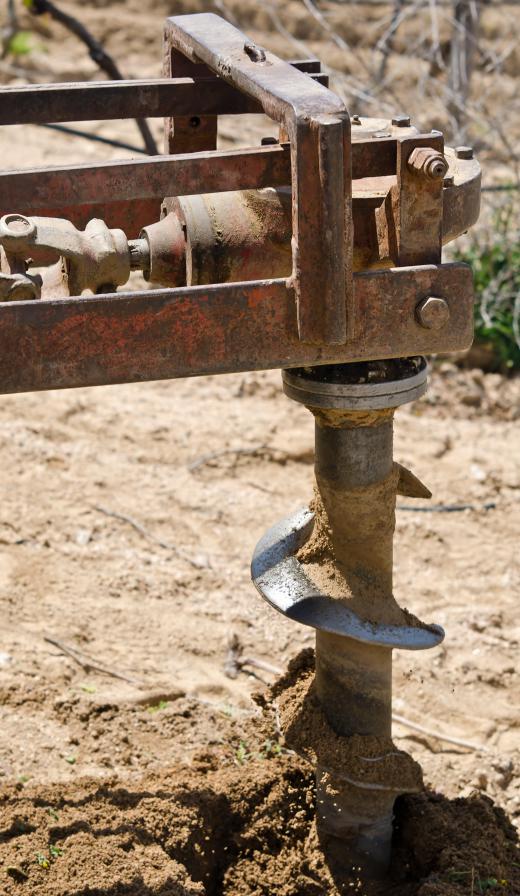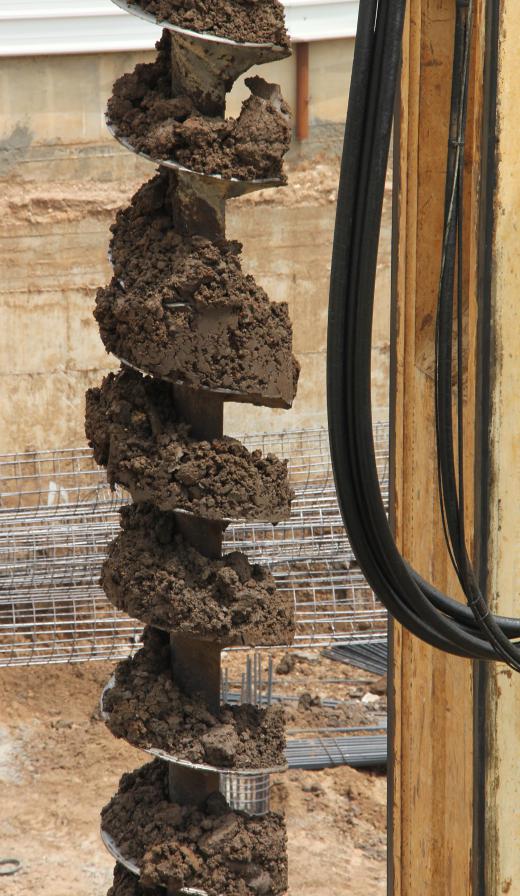An auger is a spiral shaped tool that moves materials or liquids from one area to another. When the tool is rotated, the materials or liquids move along the spiral to the desired location. A drill bit, which is the most commonly known auger, uses the design to remove the shavings and other debris from the hole while it is being drilled.
Augers have, however, been in use since ancient times. The first is said to have been invented sometime in the 200s BC by Archimedes. This first design was called a water-screw, which was used to transfer water from lower levels to higher levels. Today, water pumps are usually used to serve the same purpose, though the Archimedes Screw is still occasionally used.

Modern day uses of the auger design can be found in snowblowers, which move snow toward an impeller and then throw it into a discharge chute. Another example of a modern auger design is the Zamboni, which uses one to remove loose ice particles from the top of the ice on skating rinks in order to create a smooth surface. Plumbers also use a specialized one in order to remove objects from pipes. Combines, which use both an auger enclosed in a tube and one that is not enclosed, move unthreshed crops into a threshing mechanism in order to move the grain in and out of the hopper.

Another agricultural use of the design is put into place with the grain auger. This tool is used to move grain from carts and trucks into special storage bins. The grain auger can be powered through the power take-off of a tractor, with an electric motor, or with an internal combustion engine. The spiral causes the grain to move upward through a long metal tube as the hopper receives the grain from the cart or truck. A chute at the top helps glide the grain into the storage bin.
